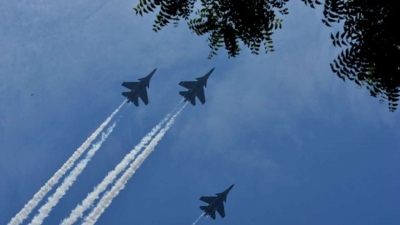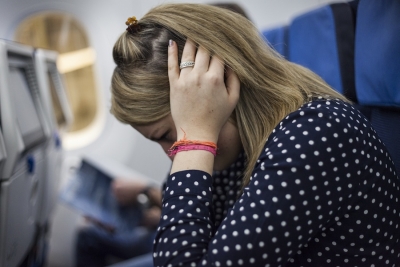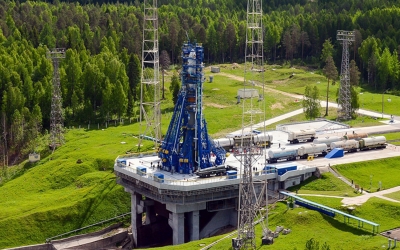
Amelia Earhart was an American aviator who set many flying records and championed the advancement of women in aviation. She became the first woman to fly solo across the Atlantic Ocean, and the first person ever to fly solo from Hawaii to the U.S. mainland.
Amelia Earhart didn’t flinch. The 21-year-old was attending an air show in Canada in 1918 when a stunt plane dived right toward her. But instead of running out of the way, she faced the plane down hat wasn’t Earhart’s only brave moment. Born in Kansas on July 24, 1897, she volunteered during World War I starting in 1917, treating wounded Canadian soldiers returning from the European battlefields. Nearby were pilot practice fields, where she discovered her passion for flying.
“…decide…whether or not the goal is worth the risks involved. If it is, stop worrying…” said Amelia Earhart, and she lived her life based on her own words. As a child, she was known for her fierce independence, quite uncommon for girls of the era, and was full of adventure traits that would immortalise her, well after her death.
Ironically, when Earhart saw her first aircraft at the lowa State Fair in Des Moines, as a 10-year-old, her father tried to pique his daughters’ interest in taking their first flight. However, one look at the rickety thing and all she wanted to do was return to her merry-go-round for she found the plane to be “a thing of rusty wire and wood and not at all interesting”.
However, it seemed she was destined to take to the skies one way or the other for, when she was 23, on December 28, 1920, she and her father attended an aerial meet at Daugherty Field in Long Beach, California. After inquiring about flying lessons, she was booked for a passenger flight the following day, and the cost was $10 for a 10-minute flight with Frank Hawks. That ride changed her life forever, and in her book, Last Flight, she reveals how. “By the time I had got two or three hundred feet off the ground, I knew I had to fly.” Not too long after, she bought The Canary, her first plane, a second-hand yellow Kinner Airster.
Take off
On May 16, 1923, Earhart became the 16th woman in the U.S., to be issued a pilot’s license by the Fédération Aéronautique Internationale. Soon after, a series of events led her to live in Medford, Massachusetts. Her interest in aviation strong as ever, she became a member of the American Aeronautical Society’s Boston chapter and was eventually elected its vice president. She also flew the first official flight out of Dennison Airport in 1927. She donned multiple hats as she penned local newspaper columns promoting flying. And as her interest grew, so did her fame. =
Then, in 1928, Earhart received a phone call from Capt. Hilton H. Railey, who asked her if she was interested in flying the Atlantic. Later, that year, she I was a passenger on a transatlantic flight and became the first woman to do so. Four years later, she set off on her own from Harbour Grace, Newfoundland, to Paris. Though she landed in Ireland instead, because of weather conditions and mechanical failure, she was instrumental in setting two records she became the first woman and the second person to fly solo across the Atlantic. For this, she was awarded a gold medal from the National Geographic Society, presented by Herbert Hoover, then U.S. President.
In 1935, she added another feather to her cap, another first to her list of achievements –she became the first person to fly from Hawaii to the American mainland, thus, also becoming the first person to fly solo over the Pacific and consequently, the first to fly solo over the Atlantic and Pacific Oceans.
Final flight
Nowhere close to being done, in June 1937, she set forth on a J mission to circumnavigate the earth by air. In short, she aimed to fly around the world at the equator and thus become the first woman in the world to do so. With her new plane, Lockheed Electra, 39-year-old Earhart set off on the journey from Miami, the US, along with her navigator Fred Noonan After multiple stops along the way, including Karachi and Calcutta, on June 29, they landed in Lae, Papua New Guinea, with just 7,000 miles left in their journey, after which they took off on July 2 for Howland Island, about 2.500 miles from Lae. It was deemed the most challenging leg of their trip.
However, after a run-in with inclement weather and fading radio transmissions, all contact with the Electra was lost, for, the plane carrying Amelia and Noonan vanished. Search efforts went on till 1939, within which time, multiple speculations and theories had arisen about her disappearance. However, on January 5, 1939, Earhart was declared dead.
Earhart’s impact on women’s rights was unmissable, and throughout her life, she doggedly represented what she thought women ought to do and stand for. In 1935, she was an advisor to aeronautical engineering and a career counsellor to female students, at Purdue University. She was also a member of the National Woman’s Party and an early supporter of the Equal Rights Amendment. She remained an inspiration for women, silently motivating them to fly high, literally, and otherwise, while she lived, and much later too, decades after her death.
Picture Credit : Google






